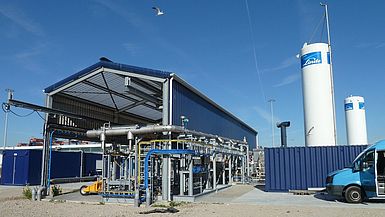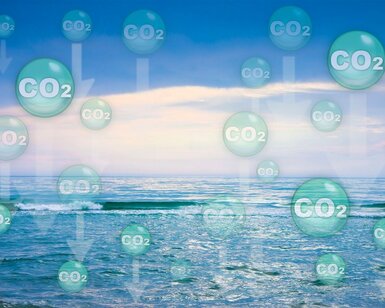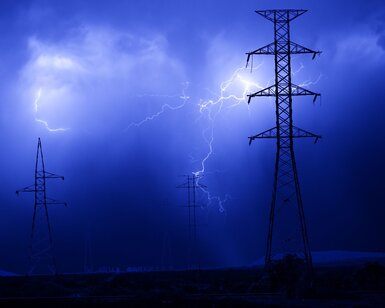Please type a search term (at least two characters)
News
EURAMET projects enable Europe’s first calibration facility for LNG

Liquid energy gases provide cleaner alternatives to traditional fuels - now Europe has a new calibration facility for these energy sources
Liquid natural gas (LNG) and Liquefied Biogas (LBG or bio-LNG), both chiefly composed of methane, are one of the best ways to store and transport energy. This, and their high energy content, make them ideal for use in industries requiring a lot of power – such as heavy-duty haulage and marine transport. In addition, engines running on LNG and LBG are quieter and produce less CO2 emissions relative to petrochemical products such as gasoline or diesel. For this reason, the use of these types of fuels is one of the pillars of the European clean fuel strategy and the EU Directive on alternative fuels.
Of particular importance are the correct calibration of LNG instruments such as flow meters and systems for determining composition, density and energy content.
Building on the work of two previous EURAMET projects (ENG03 LNG and ENG60 LNGII) the now completed EMPIR project Metrological support for LNG and LBG as transport fuel (16ENG09, LNG III) has made a major step forward thanks to the development of Europe’s first calibration facility for LNG and LBG.
Over ten years in construction, the facility based in Rotterdam in the Netherlands, and built by the National Metrology Institute of the Netherlands, VSL, is capable of traceable calibrations for both flow and composition of LNG, LBG and liquid nitrogen and has already drawn clients from industry.
This LNG facility has an amazing mass flow measurement calibration uncertainty of 0.17 % (k = 2) which means it is capable of validating instrumentation down to a 0.5 % accuracy class.
In addition to the new facility the project has:
- Project partners NEL and VSL supported the development of the published international standard, ISO 21903:2020, that specifies the metrological and technical requirements for flow meters that can dynamically measure LNG and other refrigerated hydrocarbon fluids.
- Project partners Mestrelab, Naturgy, Reganosa, TNO, and VTT validated 3 new, cost-effective sensors for determining LNG composition, developed in the projects, to determine the energy content (methane number) and that enable real-time engine management for optimal engine performance.
- Validation of EffecTech liquefier by project partners EffecTech and VSL using RUB’s equation of state software that can be successfully employed for the calibration and performance evaluation of optical sensors for LNG-composition measurement.
- Validation of a primary standard for volume flow developed by project partner Césame-Exadébit SA in the previous EMRP project, that can also act as a transfer standard.
- Publication of a good practice guide by project partners NPL and VSL on a new method for the weighing of particulate filters used in LNG and LBG refueling stations - highlighting many of the issues and pitfalls associated with setting up traceable measurement, from onsite sampling to the final mass value for particulates in LNG and LBG.
As well as improving trust in the transport and storage of cryogenic liquid fuels, which form an essential part of the aim of making Europe ‘carbon neutral’ by 2050, the new facility, and other project outputs, will also aid in energy security.
Menne Schakel from VSL who coordinated the highly successful project has said about the work
“The LNG calibration facility enables LNG meter manufacturers, LNG end-users, and the metrological and scientific communities to gain confidence in LNG trade. The impressive list of project outputs supports the large-scale adoption of LNG and LBG as clean transport fuel, playing a key role in the energy transition.”
This EMPIR project is co-funded by the European Union's Horizon 2020 research and innovation programme and the EMPIR Participating States.
Want to hear more about EURAMET?
Carbon dioxide, released from man-made activities, is lowering the pH of the Earth’s oceans, and impacting the health of marine organisms worldwide more
Supporting automated and reconfigurable manufacturing systems more
Working with external project Cool White to test and suggest improvements on the locally available white paints more
The project FutureEnergy has provided new calibration services for ultra-high voltages and a good practice guide on Lightning Impulse dividers more
For many of the 5000 photonics companies in Europe a precise knowledge of a material’s optical properties is vital for industrial competitiveness more





